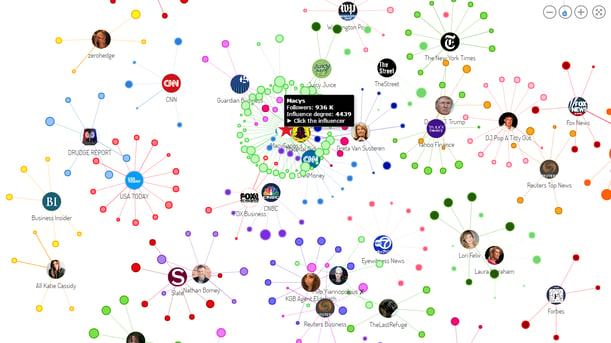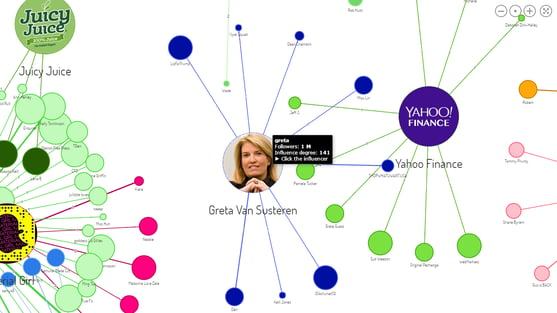Social Listening for Influencer Marketing
"Today's influencer landscape is populated by bloggers, college professors, podcasters, Instagram celebrities, and everything in between. Given this diversity, we now reach the point of pain for effective influencer marketing - targeting the best brand evangelist in a mix. This is where social metrics tools come in, as well as experience and intuition. Let’s face it, engaging Lady Gaga to influence buyers of sports socks may seem a brilliant idea, but economically speaking the end result may be a horrendous ROI. Whereas, 20 key bloggers might serve the purpose better, and far more cost effectively, and especially in the long term”
-Phil Butler, Senior Partner, Pamil Visions Public Relations
What is influencer marketing?
Over the past few decades, we’ve all seen our favorite celebrities, athletes and influencers plastered on billboards promoting a brand or product. However with the birth of the internet and social media there’s a new twist on this old concept. The idea with influencer marketing is to sponsor well-known social media personalities who will use branded products and act as an ambassador for the brand. It’s the same idea as a celebrity endorsement, however it primarily uses social media as a medium and has a more organic feel.
Why is this valuable to marketers? Because research from Sony has shown that people are more than five times as likely to buy based on a recommendation from a social influencer when compared to traditional forms of marketing (cmo.com.au).
So how does one go about social listening and increasing traction with their target market?
Step 1: Discover
The first step is to discover who the relevant influencers are for your target market. This is best done via social listening. Social listening simply means reading, analyzing and (most importantly) understanding what your target market is saying about you, your competitors and your industry on social media.
You can find out who the influencers of your target market are by searching for hashtags relevant to your industry, and finding posts with high levels of engagement. This process is much easier with social media listening software.
The basic engagement metrics are the best benchmark to begin ranking social influencers in terms of potential partners. These include likes, shares, retweets, favorites, pins, and any action that proves that a follower is actually reading and engaged with the influencer.
The number of followers is useful in a general sense, but engagement is really the key here; there are many bots and fake profiles on social media that artificially boost follower counts, but provide no engagement, and thus no purchasing power.
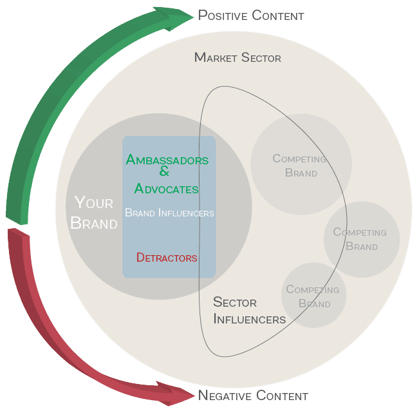 Diagram of a brand's position on social media
Diagram of a brand's position on social media
The diagram above represents the entire social media data set. Within that data set everything is being discussed, while only a small fraction of the data set will be relevant to your industry and brand. Using a social media listening tool, you are able to drill into these data sets and discover the Sector Influencers who are leading discussions about your brand and competitors. This is your pool of potential partners, who you will have to win over by proving your brand's value, and how it will benefit their followers.
Step 2: Partner
The next step is to partner with these social leaders. This can be achieved in several ways (sponsorship, free product trials, etc.). The goal is to not only to inform these influencers about your brand or product, but encourage them to become brand ambassadors on social media. You must demonstrate the value your product, and the relevance it has to your chosen influencer’s followers. This can be the most difficult stage, as social influencers will not promote a product or brand without thoroughly vetting it—otherwise they risk losing their credibility and following on social media.
Remember though, the FTC requires that sponsored messages (when you pay or reimburse an influencer) be identified as such. This can include using the #sp or #spon hashtags, or tell the followers outright that there is a sponsorship agreement.
Step 3: Share
Once you have a relationship with an influencer who believes in your product, you can leverage their organic social media reach by sponsoring product giveaways or free trials. This is not only much more cost effective than the traditional paid social media advertisements, but can also produce a higher rate of conversion on a per-impression basis.
This higher rate of conversion is due to a simple fact—you’re moving from cold engagement to warm engagement. You can think of it as a cold call, versus a warm call in a sales environment. The viewers feel like they know these social influencers, and more importantly trust their judgment. Thus, when these influencers recommend a product, it automatically moves the consumer further down the buying process funnel. In some cases social influencers can push a consumer through the whole funnel—from problem recognition all the way to purchase.
 Visual representation of the purchase process
Visual representation of the purchase processChoosing an influencer: Macy’s example
In the screenshot below, we see an overview of all the major influencers mentioning the Macy’s brand on various social media channels. Imagine you are responsible for a social media influencer pilot project, to find potential partners we want to find social media accounts with a high “influencer degree” (shown in the screenshot below). The size of the circle represents the number of followers an account has. The lines connecting each bubble represents influence, and is based on the number of interactions (re-tweets, citations, etc.) the more interactions, the thicker the line is.
Basically as Macy’s brand manager, you are looking for the largest bubbles, with the most line segments stemming from them. But remember, the most influential account may not fit the project's budget, or objectives, which brings us to the next consideration.
There are two screenshots below, both are social influence bubbles which represent the data gathered from social listening; the first is The New York Times and the second is Greta Van Susteren (a host for a show on Fox).
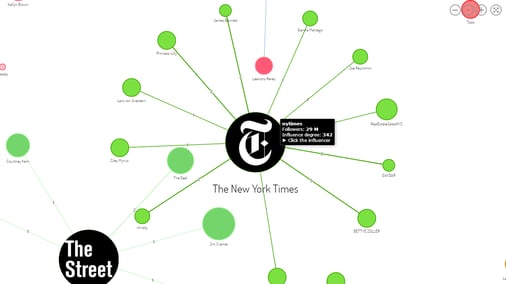 Snapshot of The New York Times' mentions relating to Macy's on 08/16/2016.
Snapshot of The New York Times' mentions relating to Macy's on 08/16/2016.
To decide between these two examples, we have to understand the requirements of this campaign. Is it on a tight budget? Is it targeted specifically to housewives watching daytime TV? Is it to reach as many people as possible with the broad strokes?
Once you better understand these constraints and objectives for your campaign, you can eliminate certain options, and shortlist others. For example if the campaign has a limited budget that may eliminate The New York Times; however if your goal is to reach as many people as possible and has a flexible budget, it may be a great candidate.
One thing worth noting is that in Macy’s particular case the brand’s own social presence has the most connections and the strongest influence on its immediate social circle. This could be a sign that an in-house social campaign may have higher engagement and a higher return compared to a social campaign with a partner.
Wrapping it up
To conclude, using social media listening to find out who is influencing your target market is a necessary investment in the digital age. The potential return from partnering with these thought leaders (or at least understanding the competitive landscape) is unmatched by traditional advertising. While finding the right partners and building these relationships may be difficult, it is important to remember these are long-term partnerships and will boost brand recognition and sales for your organization in the long run.
Using a tool like Digimind Social can help you cut through the noise, and determine exactly who the influencers are, and where your brand can find value.
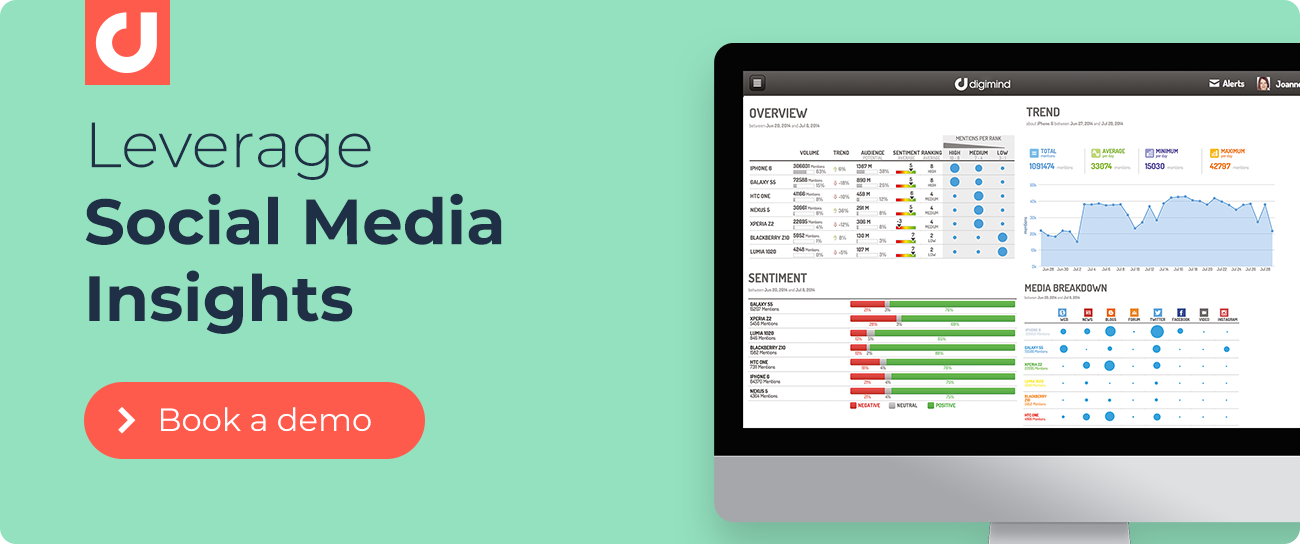
Written by Jerome Maisch
Marketing Manager @digimindci. Passionate about big data & social marketing. Photography, music and hiking lover
.png?width=100&name=logo%20(1).png)

